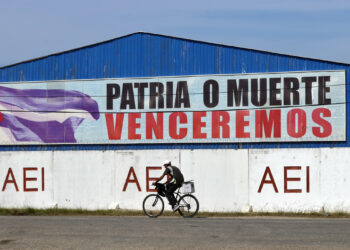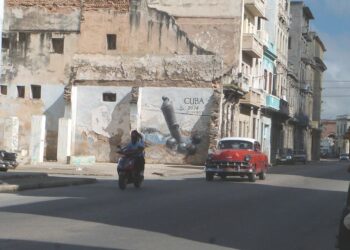Trapped in everyday life, almost drowned in resolutions, decrees, laws and plastic money cards that “bancarize” us within banks that remind us of anything else. Constantly surprised by new measures, some of which are shown to be inconsistent. Immersed in repeated GDP decreases, in the systematic reduction of real wages and pensions, in the ups and downs of the “informal” exchange rate. Surprised by the de-dollarization that partially dollarizes, it would seem that surviving each day becomes much more decisive than rescuing/remembering those key/determining/strategic aspects that one day, about five years ago, were identified, grouped and organized in what was called the National Plan for Economic and Social Development until 2030 (PNDES-2030).
And it is more than logical, the short term is so decisive that it becomes the priority for everyone, rulers and governed, because as John Maynard Keynes said, in the long term we will all be dead.
However, from short term to short term, perhaps we will manage to reach the long term, but it is very possible that what we find will be far from what we would like to find. Perhaps that is why coherence between short-term purposes and those others, the long-term ones, is so necessary.
If we look back a little, we will find a similar situation when, at the end of the first decade of this century, after putting many patches on this boat in which we are all on and which is the economy of the country, the idea of the Economic and Social Guidelines of the Party and the Revolution appeared. Certainly, they were many and very ambitious, but they made a kind of diagnosis and outlined something similar to a road map.
Then, the Guidelines themselves and the difficulty in implementing them led to the idea of ”drawing” the contours of the society and the economy that was desired, at least by a majority of the population, in that document called Conceptualization of the Economic and Social Model. At the same time, the need arose to develop a development strategy that would trace the path to materialize that model in concrete actions and that, like any strategy, required a plan to carry it out. All this effort of transformation and institutional creation required many years of work and cooperation between the academy and the government, which was partly realized through the Technical Advisory Council of the Implementation Commission.
I summarize this whole story only to emphasize something that I have repeated many times when I have been asked: the government has not been deprived of the cooperation of the academy in economic matters, in the same way that the academics have not been isolated from this work of building new institutions and paradigms.
Whether their proposals, after being heard, are or are not applied/taken into account, etc., is another matter that has to do with vested interests, conveniences, opportunity, circumstances — where I logically include the U.S. blockade — prejudices, perception of the costs and economic, political, ideological risks, leadership capacity and, logically, resources.
And yes, although it barely appears in discussions and official presentations, we have an Economic and Social Development Plan until 2030, which is publicly accessible and can be consulted on the Cuban government website.
There is not enough space to deal with each of them in detail in this article, so I will briefly summarize the objectives/purposes of each of these macroprograms.
Institutionality and macroeconomics: among other aspects, it addresses “economic issues that are essential for the management of development, such as macroeconomic balance and economic regulation,” as well as “participation, government efficiency, and the dimension of territorial development.”
Productive Transformation and International Insertion: its purpose is to “apply innovative approaches to productive restructuring aimed at maximizing the advantages of late development,” and it defines a group of sectors that should lead this transformation, such as “agro-industrial; medical-pharmaceutical-biotechnological, including health services and quality of life linked to tourism; the promotion of renewable energy and the increase in energy efficiency…; the promotion of linkages linked to the transformation of these sectors and the support activities and key infrastructures for their competitiveness.”
Infrastructure: The following objectives are defined: “expand coverage and improve the quality and competitiveness of infrastructure; achieve infrastructure networks that promote better integration and competitiveness of the country’s economic and territorial system; attract Foreign Direct Investment in infrastructure areas; reorganize and strengthen the infrastructure (physical and institutional) of standardization, metrology, quality control; expand and diversify sources of financing.”
Science, Technology and Innovation: Its main objective is “to consolidate and modernize the National System of Science, Technology and Innovation, promote intersectorality and the coordination of public policies…it must also connect science with the economy, enhancing the role of innovation and the generation of knowledge, for business competitiveness and the improvement of public administration.”
Natural Resources and Environment: It must “favor compliance with the constitutional mandate of ensuring a healthy and balanced environment; as well as achieving the objectives of the PNDES-2030 and Sustainable Development Goals…; the improvement of environmental quality in the country and the reduction of disasters in the face of dangers of natural, technological and health origin.”
Human Development, Equity and Social Justice: Defined as follows: “Social policy is essential and inherent to our model, since the human being and his integral development are the fundamental objective.”
What does not appear explicitly and publicly in the document are indicators, goals and deadlines. Nor does the cost of said Plan appear anywhere, which is perfectly logical because if the goals of arrival do not appear, there is no way to measure “how much it costs to achieve them.”
Of course, for that, a regulatory system would be necessary that allows enterprises to do what they have to do, take the risks they have to take, associate with whoever they should/can. Because what does not make sense is to demand that they have results within a regulatory system that asymptotically approaches being like a “lead umbrella.”
Similarly, if we compare what appears to be the objectives, purposes, and essential aspects of each of those macroprograms with our reality today, we would have to accept that, on balance, we are far from having made progress in those purposes.
So we have that:
- Institutionality, far from achieving an institutional framework that generates confidence, continues to produce uncertainty.
- Local governments are unable to find themselves or create a strong institutionality with the required competencies, beyond the good will and dedication of their staff.
- Corruption has become daily news, fueled by the lack of transparency and the consolidation of corporatism as an organizational model.
- Macroeconomic management has caused imbalances that are difficult to eradicate and a monetary and exchange disaster that reinforces distrust.
- Productive transformation has gone into reverse; today, for example, the integration of our productive system into the tourism sector is very weak and all of this has increased dependence on imports. Neither new export sectors nor new products have been developed, and what we are reaping today in biotechnology is what was sown more than twenty years ago.
- Medical services, the country’s main source of income, have reduced their share of total exports and tourism has ceased to be, and it seems that it will not be for a long time, the driving force that one day we thought could compensate for the destruction of the sugarcane agroindustry sector.
- Infrastructure is far from what the country needs today to boost growth and development, and where something has improved, it is insufficient despite all efforts and being an aspect of special attention of the country’s top leadership.
- The connection of science with the business system ― with the entire system ― remains weak, and its contribution to the competitiveness of the system is the same, in the same way that our technological dependence has grown.
- Our cities have become large dumps that are a permanent threat to the environment and to the citizens of each neighborhood.
- Meanwhile, human development, equity and social justice have given way to inequity, inequality and poverty.
I do not enjoy making this account, I would deny myself if I did. I only call attention to the fact that, several years after this National Plan for Economic and Social Development was approved, the results are far from what was declared, in the same way that the country is different, quite different from when said plan was discussed and approved.
It would be healthy, with data in hand, to publicly check the results of those 108 projects.
Perhaps it is necessary to rethink this Plan, adapt it to the new circumstances, adjust it to the new conditions, reduce this enormous number of projects without indicators and without goals to those that are strictly essential and to define for them indicators, goals and deadlines to achieve them. Publicly account for their fulfillment or non-fulfillment and assume the corresponding responsibilities.
Let us resolve the short term, but without losing the compass that points the way to development.










